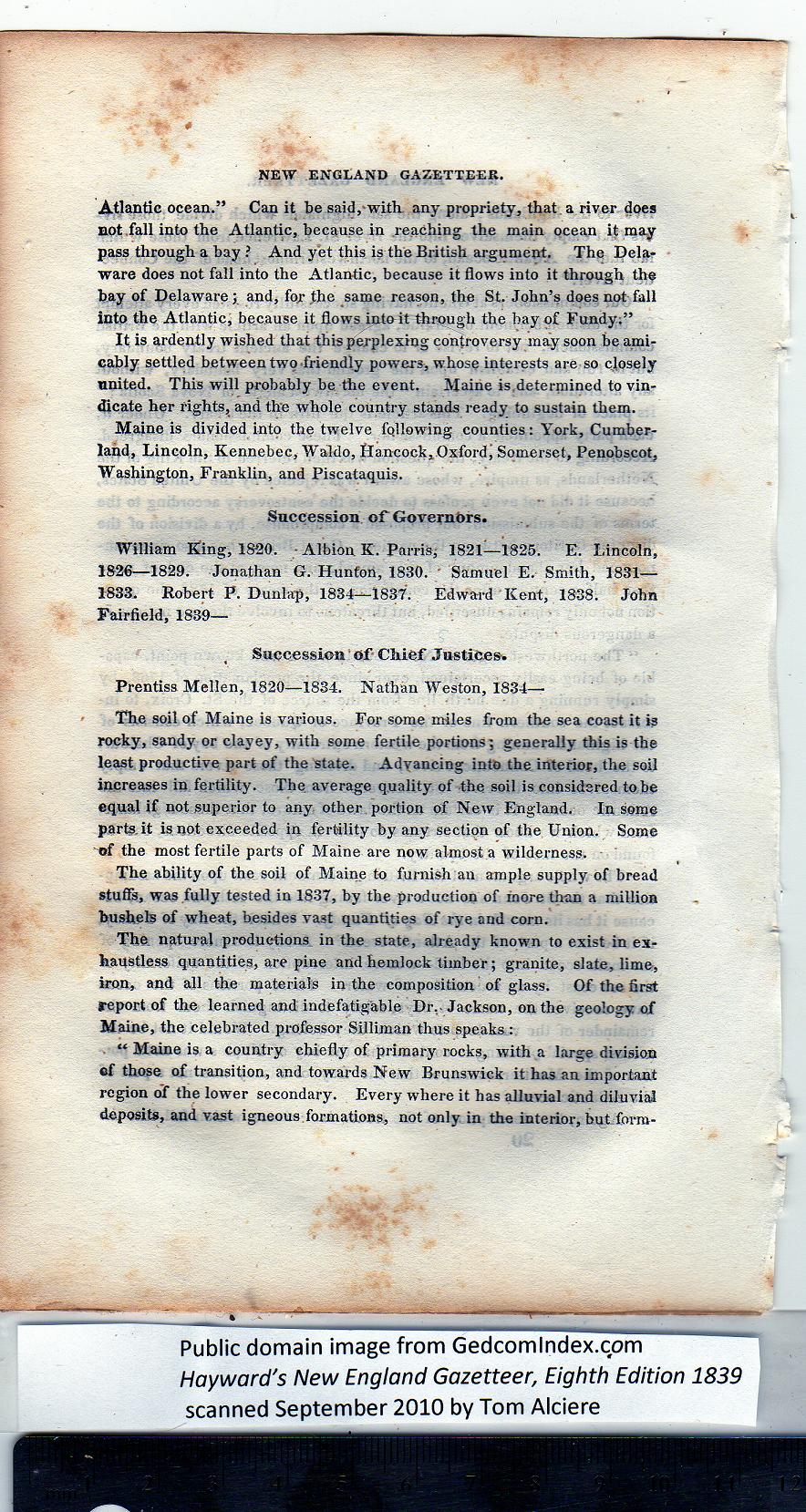|
NEW ENGLAND GAZETTEER.
Atlantic ocean.” Can it be said,-with any propriety, that a river does
not fall into the Atlantic, because in reaching the main ocean it may
pass through a bay ? And yet this is the British argument. The Dela-
ware does not fall into the Atlantic, because it flows into it through the
bay of Delaware; and, forjthe same reason, the St. John’s does not fall
into the Atlantic, because it flows intuit-through the bay of Fundy;”
It is ardently wished that this perplexing controversy may soon be ami-
cably settled between two-friendly powers, whose interests are so closely
united. This will probably be the event. Maine is,determined to vin-
dicate her rights, and the whole country stands ready to sustain them.
Maine is divided into the twelve following counties: York, Cumber-
land, Lincoln, Kennebec, Waldo, flancock, Oxford j Somerset, Penobscot,
Washington, Franklin, and Piscataquis.
Succession of Governors.
William King, 1320. - Albion K. Parris; 1821—1825. E. Lincoln,
1826—1829. Jonathan G. Hunton, 1830. ' Samuel E. Smith, 1831—
1833. Robert P. Dunlap, 1834-^-1837. Edward Kent, 1838. John
Fairfield, 1839-
Succession of Chief Justices.
Prentiss Mellen, 1820—1834. Nathan Weston, 1834—
The soil of Maine is various. For some miles from the sea coast it is
rocky, sandy or clayey, with some fertile portions; generally this is the
least productive part of the state. Advancing into the interior, the soil
increases in fertility. The average quality of the soil is considered to be
equal if not superior to any other portion of New England. In some
parts.it is not exceeded in fertility by any section of the Union. Some
of the most fertile parts of Maine are now almost a wilderness.
The ability of the soil of Maine to furnish an ample supply of bread
stuffs, was fully tested in 1837, by the production of more than a million
bushels of wheat, besides vast quantities of rye and corn.
The natural productions in the state, already known to exist in ex-
haustless quantities, are pine and hemlock timber; granite, slate, lime,
iron, and all the materials in the composition of glass. Of the first
report of the learned and indefatigable Dr.- Jackson, on the geology of
Maine, the celebrated professor Silliman thus speaks :
** Maine is a country chiefly of primary rocks, with a large division
cf those of transition, and towards New Brunswick it has an important
region of the lower secondary. Every where it has alluvial and diluvial
deposits, and vast igneous formations, not only in the interior, but form-
PREVIOUS PAGE ... NEXT PAGE
This page was written in HTML using a program written in Python 3.2 and image-to-HTML text generated by ABBYY FineReader 11, Professional Edition.
|
